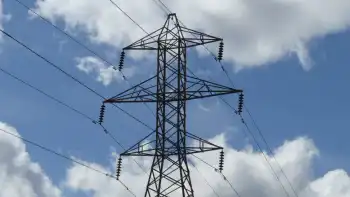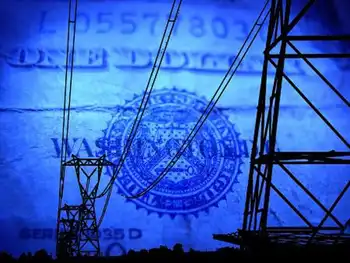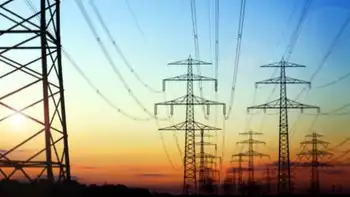Ohio Might Be Power Failure Source
TORONTO, ON -- - A massive power blackout retreated stubbornly today as power officials struggled to understand why the historic outage spread in minutes through the northeastern United States and southern Canada. Lights flicked on and air conditioners restarted for some, but new problems arose as the power system struggled back to life.
There were growing indications the original problem began in Ohio, rather than New York or Canada, as some had thought.
In Connecticut, Gov. John G. Rowland issued an emergency plea for residents to save power this morning after a state transmission line fizzled.
"There presently is insufficient capacity to remain a reliable power supply," John Wiltse, a spokesperson for the governor, said after a transmission line that feeds southwestern Connecticut went down around 5:45 a.m.
Cleveland weathered its worst water crisis in history as the blackout shut all four major pumping stations. The pumps, which serve more than one million residents in the city and 20 suburbs, began operating this morning, but the National Guard trucked in 6.3 million litres of drinking water to help until taps flowed again.
In Canada, millions of Ontario residents woke today to another sweltering day without electricity.
With Ontario Premier Ernie Eves declaring a state of emergency, citizens were advised to stay home from work today unless they were essential or emergency workers. The provincial government urged people to conserve electricity and asked businesses to close for the day.
In New York City, power was restored this morning to parts of all five boroughs and some suburbs, but millions faced a morning rush hour without subway service or many of the traffic lights and no timetable for full restoration of power.
"Today will also present challenges," New York Mayor Michael Bloomberg told reporters. He asked essential city workers to come in but told non-essential counterparts to stay home and urged citizens to use judgment about working today.
"There are worse things than taking a summer Friday off from work," he said.
Bloomberg said a trying, hot night had cost the life of a 40-year-old who suffered a heart attack during one of New York City's 60 serious fires, most caused by candles used to stave off darkness. There were 800 elevator rescues; 80,000 calls to 911 and a record 5,000 emergency medical service calls. Emergency personnel "worked incredibly hard to get us through the night safely," Bloomberg said.
In Michigan, some customers may have to endure a weekend without electricity. Everywhere officials urged residents, businesses and travellers to cope with the inconvenience.
"This is truly one of the instances where we're all in this together," Gov. Jennifer Granholm of Michigan said during a statewide address last night. "So be calm, be supportive of your neighbour."
State workers in Michigan's capitol, Lansing, were told to report to work today but in harder-hit Detroit they were ordered to stay home.
While terrorism was swiftly ruled out by President George W. Bush and other officials, there was scant indication of what had caused the outage, which began on the cusp of yesterday's afternoon rush hour in Eastern cities.
There are indications it probably "started somewhere in the Midwest, perhaps Ohio," Michehl Gent, president of the North American Electric Reliability Council, said today on ABC-TV's Good Morning America.
Gent, whose non-profit council was formed after the 1965 Northeast blackout to promote the reliability of the bulk electric systems, did not say what those indications were but expressed confidence that terrorism was not involved.
New York Independent System Operator president William Museler said huge power fluctuations originating from a Midwest power plant started the downfall of the grid. He said the power swings became so large that the system in Ontario system could not sustain them, and the problem migrated to New York.
The New York Independent System Operator, which runs the state's wholesale electricity market and monitors power usage, said it had detected a sudden loss of power generation at 4:11 p.m.
More generally, industry and government experts blamed a system composed of interconnected grids that has not been upgraded to meet power demands.
The disruptions were as diverse as they were widespread.
A small explosion at the Marathon Oil refinery 15 kilometres south of Detroit was blamed on the outage, which cut power to a pump, allowing a buildup of gasses that ultimately exploded in a smoke stack. No one was hurt but police fearing additional explosions or possible release of toxic gas evacuated hundreds of residents from a 1.6-kilometre radius around the refinery.
In New York City, thousands of stranded commuters were forced to sleep in bus and train terminals and even in the streets. Hundreds of out-of-towners at the Marriott Marquis slept on sidewalks because the hotel did not have a generator to power its electronic room keys.
In Sudbury, Ont, some 340 kilometres north of Toronto, more than 100 miners at a nickel mine were stranded in underground lunchrooms because the outage halted elevators used to bring them to the surface. Authorities said they were not in any immediate danger because they had water and that backup power was running the ventilation system.
In Cleveland, the loss of power wasn't the only problem. About 1.5 million residents faced a crisis because there was no electricity to pump water from Lake Erie. At least three Eastern suburbs were out of water and officials said western suburbs could go dry.
With sewage treatment plants blacked out, untreated waste releases forced the closing of beaches in New York City and Cleveland.
Despite the outages in Manhattan, New York's financial markets had no intention of shutting down.
The New York Stock Exchange and Nasdaq resumed stock trading on schedule this morning, but the American exchange delayed trading because problems at a Consolidated Edison substation prevented air conditioning from reaching the trading floor.
However, businesses from Manhattan through the Midwest were anxious about technical glitches and more power outages a day after the biggest blackout in U.S. history.
In San Diego, Bush said, "slowly but surely we're coping with this massive, national problem," and added that he would order a review of "why the cascade was so significant."
The president said he suspected that the U.S. electrical grid would need to be modernized.
Electric industry and government officials said the U.S. power grid has needed major upgrades for years, but industry experts said there were three major obstacles in the way: the expense, environmental opposition and people who didn't want power facilities nearby.
Both federal and state agencies, as well as congressional committees, are expected to investigate the blackout and try to determine why measures put in place to isolate grids and keep power disruptions from spreading failed to do so.
Related News

Fish boom prompts energy conglomerate to spend $14.5M to bury subsea cables
HALIFAX - The parent company of Nova Scotia Power disclosed this week to the Utility and Review Board that it spent almost $14,492,000 this summer to bury its Maritime Links cables lying on the floor of the Cabot Strait between Newfoundland and Cape Breton.
It's a fish story no one saw coming, at least not Halifax-based energy conglomerate Emera.
The parent company of Nova Scotia Power disclosed this week to the Utility and Review Board that it spent almost $14,492,000 this summer to bury its Maritime Link cables lying on the floor of the Cabot Strait between Newfoundland and Cape Breton.
The cables…




